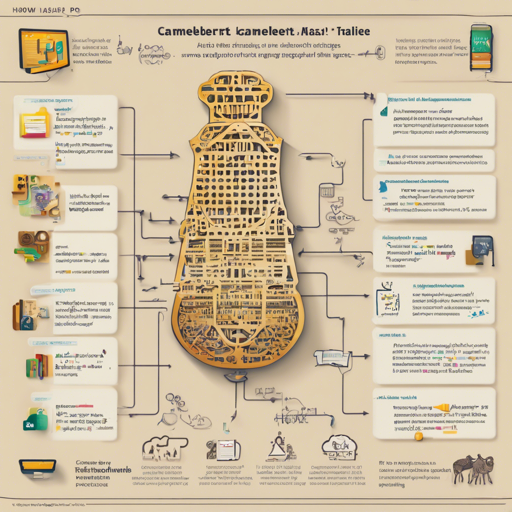In the ever-evolving world of Natural Language Processing (NLP), the CAMeLBERT-Mix POS-MSA model stands out as an innovative solution for tagging Arabic text. This guide will walk you through the steps needed to implement this model effectively, along with some troubleshooting tips to help you navigate any bumps along the way. Let’s dive in!
What is the CAMeLBERT-Mix POS-MSA Model?
The CAMeLBERT-Mix POS-MSA Model is a Part-Of-Speech tagging model specifically designed for Modern Standard Arabic (MSA). It has been fine-tuned from the CAMeLBERT-Mix base model by utilizing the [PATB](https://dl.acm.org/doi/pdf/10.5555162/1804.1621808) dataset, ensuring high accuracy in language processing tasks.
How to Use the Model
Before using the CAMeLBERT-Mix POS-MSA model, ensure you have the required library:
pip install transformers==3.5.0Here’s a simple script to get you started:
from transformers import pipeline
pos = pipeline("token-classification", model="CAMeL-Lab/bert-base-arabic-camelbert-mix-pos-msa")
text = "إمارة أبوظبي هي إحدى إمارات دولة الإمارات العربية المتحدة السبع"
results = pos(text)
print(results)In the above code:
- We import the necessary <pipeline> from the transformers library.
- Next, we create a POS tagging pipeline using our CAMeLBERT-Mix model.
- Finally, we input our Arabic text, retrieve the POS tags, and print the results.
Understanding the Model Results
Imagine you are assembling a jigsaw puzzle. Each piece represents a word in your sentence, and the model meticulously identifies where each piece fits. The results will give you a breakdown of each word’s role:
[{'entity': 'noun', 'score': 0.9999592, 'index': 1, 'word': 'إمارة', 'start': 0, 'end': 5},
{'entity': 'noun_prop', 'score': 0.9997877, 'index': 2, 'word': 'أبوظبي', 'start': 6, 'end': 12},
{'entity': 'pron', 'score': 0.9998405, 'index': 3, 'word': 'هي', 'start': 13, 'end': 15},
...
]Here, each dictionary entry illustrates a word, its entity type (noun, pronoun, etc.), and its confidence score, similar to how puzzle pieces have labels to indicate where they belong in the overall picture.
Intended Uses
This model is primarily used for Natural Language Processing tasks within Arabic texts. It’s particularly valuable for:
- Text analysis
- Sentiment analysis
- Language translation
- Named entity recognition
Troubleshooting
Should you encounter any issues while implementing or running the model, consider these troubleshooting tips:
- Problem: Issues related to library compatibility or version errors.
- Solution: Ensure your transformers library is set to version 3.5.0. Double-check your environment setup.
- Problem: The model isn’t returning expected results.
- Solution: Validate that the input text is in the correct format and adheres to the Modern Standard Arabic syntax. Experiment with different sentences.
For more insights, updates, or to collaborate on AI development projects, stay connected with fxis.ai.
Conclusion
With the CAMeLBERT-Mix POS-MSA model, performing part-of-speech tagging on Arabic text becomes a seamless task. Enjoy leveraging this powerful tool to enhance your NLP projects!
At fxis.ai, we believe that such advancements are crucial for the future of AI, as they enable more comprehensive and effective solutions. Our team is continually exploring new methodologies to push the envelope in artificial intelligence, ensuring that our clients benefit from the latest technological innovations.

